Africa has some of the most dangerous and venomous snakes in the world
There are 2 major types of snakes in the world.
VENOMOUS SNAKES.
capable of producing and injecting snake venom through specialized teeth called fangs
NON-VENOMOUS SNAKES
Lack venom, but have a muscular power that they use to subdue and kill their prey.
There are about 2,800 species of snakes in the world, about 800 are considered venomous
Fatalities from snake bites are quite rare and the vast majority of snakes are actually not venomous. Venomous snakes will often avoid humans and if they bite they rarely inject their full venom load.
Do you know that Snakes are found on every continent in the world except Antarctica?
There are four main families of venomous snakes each with various subfamilies.
VIPERIDAE
They are the largest family of venomous snakes. They are found in America, Africa, Europe, and Asia. The most poisonous of this family belong to the subfamily #CROTALIDAE. E.g. are rattlesnakes, pit vipers, copper heads water moccasins (cottonmouths)
Identification features: Large hollow retractable fangs, triangular shaped head, heavy bodied, nostril pits on the head (heat-sensing organs) & subcaudal plates arranged in a single ro
Preferred habitat;
Rattlesnakes - dry grasslands & rocky hillsides
Copperheads – aquatic & dry environments
Cottonmouths – near swamps and rivers.
Toxin types; hemotoxic, cardiotoxic and cytotoxic
ELAPIDAE
This is the second largest family of venomous snakes. They are found in the tropical and subtropical regions of the world. They are the deadliest family with the most poisonous snakes. E.g. cobras, mambas, kraits (found in Africa and other areas where u find the Viperidae) & coral snakes (found mainly in North America) etc.
Identification: They have smaller fixed fangs, pupils are round & the subcaudal plates are arranged in double plates. The coral snakes are very colorful & have two varieties, a smaller venomous type and a bigger non-venomous type they are differentiated with their color bands; (red on yellow kill a fellow, red on black venom lack).
Preferred habitat; dry sandy conditions and often a body of water.
Type of toxin: Neurotoxic which causes damage to the nervous system.
Cause of death following bites: Paralysis of the lungs and heart.
COLUBRIDS
e.g. Boomslang, African twig snake. Not all colubrid are venomous e.g. the king snake but their bites are also medical emergencies because of the deadly bacteria present in the mouth that could be inoculated into the wound. The others are mildly venomous.
Identification: They have rear mounted grooved fangs.
Type of toxin:Hemotoxic.
HYDROPHIIDAE
These are the sea snakes, they are extremely venomous but bites from these snakes are rare because they are very docile creatures and bite only when abused.
- Type of toxin: Neurotoxic.
VENOM.
Snake venom is highly modified saliva containing toxins which facilitate the immobilization and digestion of prey and defends against threats.
wikipedia
Venom is mostly water. Enzymatic proteins in venom impart its destructive properties. Proteases, collagenase, and arginine ester hydrolase have been identified in pit viper venom
Specific details are known for several enzymes as follows:
(1) hyaluronidase :Allows rapid spread of venom through subcutaneous tissues by disrupting mucopolysaccharides;
(2) phospholipase A2 :Plays a major role in hemolysis secondary to the esterolytic effect on red cell membranes and promotes muscle necrosis.
(3) Thrombogenic enzymes promote the formation of a weak fibrin clot, which, in turn, activates plasmin and results in a consumptive coagulopathy and its hemorrhagic consequences.
Enzyme concentrations vary among species, thereby causing dissimilar envenomations. E.g. Copperhead bites generally are limited to local tissue destruction. Rattlesnakes can leave impressive wounds and cause systemic toxicity. Coral snakes may leave a small wound that later results in respiratory failure from the systemic neuromuscular blockade.
The local effects of venom serve as a reminder of the potential for systemic disruption of organ system function. Others include
• Local cell edema
• Neuromuscular blockade
• Local cell death
• Local bleeding
• Myonecrosis
VISIBLE EFFECTS OF THE VENOMS ON THE VICTIMS
Depending on the species of snake there are 5 types of venom that have been identified. Each venom acts differently inside the body of the victim.
Neurotoxic Venom
Found in cobras & mambas. This attack the Central Nervous System(CNS) and starts to affect movement, breathing, swallowing, speech, and sight.
Cytotoxic venom
Found in puff adders. Attacks the body cells or tissues. This bite is extremely painful with much swelling and marked symptoms of shock.
Hemotoxic venom
Found in boomslang. This affects the blood by using up the clotting factors so it no longer coagulates leading to extensive blood loss into tissues presenting as ecchymosis.
Myotoxic venom
Sea snakes, attacks the muscles and can lead to death from kidney and heart failure by causing myoglobinuria.
Cardiotoxic
Copper heads, this affects the myocardium directly causes various forms of arrhythmias.
It is, however, important to note that venom in many snakes, such as pit vipers, affects virtually every organ system in the human body and can be a combination of many toxins, including cytotoxins, hemotoxins, neurotoxins, and myotoxins, allowing for an enormous variety of symptoms .
CLINICAL FEATURES OF A SNAKE BITE PATIENT.
- Immediate response: -The most common symptoms of all snakebites are overwhelming fear, panic, and emotional instability, which may cause symptoms such as nausea and vomiting, diarrhea, vertigo, fainting, tachycardia, and cold, clammy skin.
Television, literature, and folklore are in part responsible for the hype surrounding snakebites, and a victim may have unwarranted thoughts of imminent death.
- Local reactions:- Local reactions are more prominent in the case of viper bites and less so in others. Intense pain, swelling and discoloration develop within minutes and often serosanguinous fluid exudes from the fang marks.
- General Effects: - These vary with the types of snake.
Pit viper bites often show two characteristic fang marks at the site of the bite. Intense pain usually results at the site within five minutes of the bite, and swelling is common. within 3-4 hours of the bite, the hemorrhagic manifestation appears in the nature of extensive bruising, bleeding from the bitten part and injection sites, bleeding from the gums.
Other symptoms that may result from pit viper hemotoxin include weakness, rapid pulse, numbness, tingling sensations, bruising, bleeding disorders, vomiting, an unusual metallic taste, and confusion.
- Bites from snakes such as coral snakes and their exotic relatives whose venom is neurotoxic may result in minimal pain and no visible marks on the skin. Instead of pain and swelling, these bites often cause local numbness along with a number of other symptoms including:
- drooping of the eyelid (ptosis), difficulty swallowing (dysphagia), double vision (diplopia), sweating, excessive salivation, a decrease in reflexes, respiratory depression, and paralysis.
- Cobra and Krait bite:- Soon after the byte, the patient complains of a sinking feeling, drowsiness, blurring of vision, diplopia. Dysphagia and dyspnea.
- Sea snake bites: - sea snake bites are identified by the victims as sharp pricks. The local reaction may be insignificant.
Signs of envenomation occur within one hour and initial symptoms consist of pain and stiffness of the muscles of the neck, back and proximal parts of the limbs but rapidly becoming generalized.
HOW TO HELP A SNAKE BITE PATIENT AS A PASSERBY OR AS A HEALTH PROFESSIONAL.
History usually can be obtained from the patient. Knowledge of indigenous fauna also is important.
The time elapsed since the bite is a necessary component of the history. This allows assessment of the temporal effects of the bite to determine if the process is confined locally or if systemic signs have developed.
Obtain a description of the snake or capture it, if possible, to determine its color, pattern, or the existence of a rattle.
Most snakes remain within 20 feet after biting, so it may be easy to find them and identify if it’s a venomous snake or a non-venomous snake.
Access the timing of events and onset of symptoms. Inquire about the time the bite occurred and details about the onset of pain. Early and intense pain implies significant envenomation.
Local swelling, pain, and paresthesia may be present.
Systemic symptoms include nausea, syncope, and difficulty swallowing or breathing.
Determine history of prior exposure to antivenin or snakebite.
Determine history of allergies to medicines because antibiotics may be required.
Determine history of comorbid conditions (e.g., cardiac, pulmonary, and renal disease) or medications (e.g., aspirin, anticoagulants such as warfarin [Coumadin] or, beta-blockers).
First aid.
Snake Bite is a medical emergency that needs prompt treatment. First thing to do is
Protect the patient (and others, including yourself) from further bites.
Keep the victim calm. Acute stress reaction increases blood flow and endangers the patient.
Keep people near the patient calm. Panic is infectious and compromises judgment.
Call for help to arrange for transport to the nearest hospital emergency room, where antivenom for snakes common to the area will often be available.
Make sure to keep the bitten limb in a functional position and below the victim's heart level so as to minimize blood returning to the heart and other organs of the body.
Remove any rings or constricting items because the affected area may swell.
Dos and Don’ts
DO NOT wash the area of the bite! Retain traces of venom for use with venom identification kits.
DO NOT allow the person to become over-excited.
DO NOT apply a tourniquet (a rope)
DO NOT apply cold compresses to a snake bite.
DO NOT give the patient anything to eat or drink. This is especially important with consumable alcohol, a known vasodilator which will speed up the absorption of venom.
DO NOT incise the bitten site.
DO NOT use your mouth to suck the venom out, use suction pumps contained in snake bite kits if available.
DO NOT remove bandage in the field.
DO NOT give antivenom in the field.
How to identify poisonous snake
They have large ventral scales covering the whole of the ventral aspect.
The mouth contains only one pair of poisonous fangs in the upper jaw, placed anteriorly (krait or cobra) or posteriorly (viper).
Presence of small teeth is characteristic of non- poisonous snake.
HOW A DOCTOR CAN HELP OUT
He/she will follow the established routine for a complete comprehensive examination.
Take Vital signs, maintain airway, breathing, circulation.
Identify Fang marks or scratches (determine coral snakebite pattern by expressing blood from the suspected wound)
Look out for Local tissue destruction
– Soft pitting edema that generally develops over 6-12 hours but may start within 5 minutes
– Bullae
– Streaking
– Erythema or discoloration
– ContusionsSystemic toxicity
– Hypotension
– Petechial, epistaxis, hemoptysis
– Paresthesia and dysesthesias - Forewarn neuromuscular blockade and respiratory distress (more common with coral snakes)
AFTER THIS HE WILL SEND THE PATIENT FOR LABORATORY INVESTIGATIONS TO.
FBC to access the hemoglobin level of the patient.
PT and PTT(partial thromboplastin time)- This helps to access the blood coagulation, and detect abnormalities in range.
Group and cross match blood- This is a test done before transfusion to determine if the donor's blood is compatible with blood of the recipient, In case of a hemolytic transfusion reaction.
Blood chemistries, including electrolytes, BUN, creatinine
Urinalysis for myoglobinuria
Arterial blood gas determinations for patients with systemic symptoms.
AFTER THE INVESTIGATION
The patient should be admitted to the intensive care and further treatment will follow before administration of antivenom.
CONCLUSION
Snakes are most likely to bite when they feel threatened, startled or provoked. Snakes are likely to approach residential areas when they are attracted to their preys. Prevention of snake bites can involve wearing protective footwear ,using flashlight, always avoiding where snakes live, and not handling snakes. Treatment partly depends on the type of snake. Antivenom is effective at preventing deaths from bites

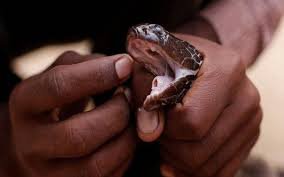
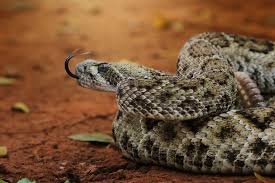
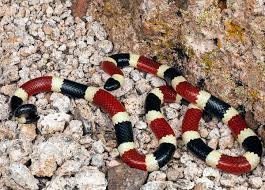
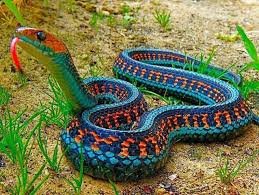
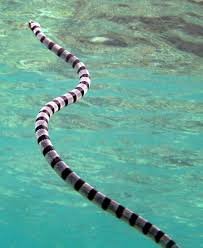
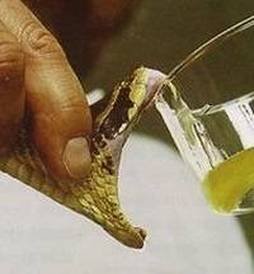

Most of the Do Nots are practised in the rural area in our countries: The lower following are done most. Awareness is rising among them but still, works need to be done.
@hafiz34 yea bro, while making this post, i had africa in mind. Thanks for spending time to read this.
@antigenx
Thank you for the tutorial dad.. I just pray not to get near to snakes OR experience snake bites.. I cannot come and kill myself...
Thanks for the education. I never knew snake bite could be bad as that
Wow, every one of the Don'ts is something I would have done if I didn't read this. My knowledge of snake bites was not only low but catastrophically wrong in every way 🙆 chai!
Thanks!
Thanks for this beautiful information.
I just hate seeing snakes..couldnt read this post well..but it is good awareness
This was really worth reading.
The kind phobia wey i get for this creature eeehn? Even as i dey read the text and seeing them goose bumps all over me.
Thanks sha for this piece.. Doc
This information is encyclopedic! Fully loaded.. Amazing work @antigenx